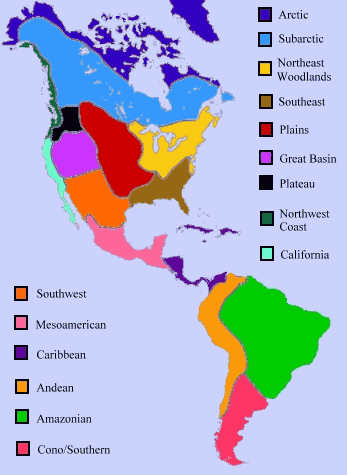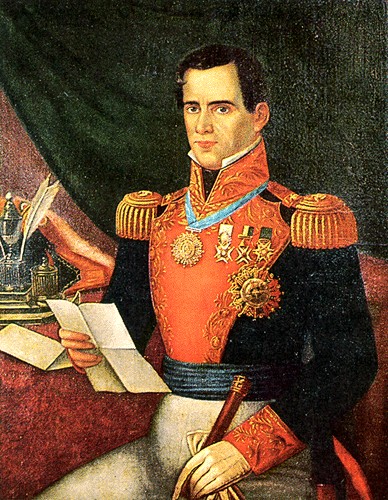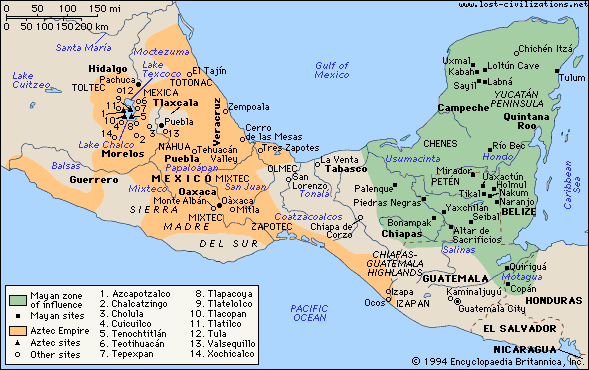I’ve got a lot to say here, so bear with me.
You’ve hit on an important point - and an important reason for my anger about this new legislation. In racial terms, the majority of illegal and undocumented Mexican, Guatemalan, and Salvadoran immigrants are Indians/Native Americans. (I use the term “Native American” as a reference to the Americas, not to the United States, though it’s often not used that way). If enforcement of the legislation does entail racial profiling, it won’t be racial profiling of “Hispanics,” as has been inaccurately claimed; it will be racial profiling of Indians, regardless of their national origins. I myself am usually unable to distinguish between U.S. and Mexican/Central American Indians based on physical appearance alone, and I have far less faith in the abilities of a white law enforcement officer to do so.
The “Hispanic” classification is a U.S. mechanism for categorizing all peoples with origins in Spanish-speaking countries (meaning that Brazilians aren’t technically Hispanics, since Brazil is not a Spanish-speaking country), as a common ethnic group, regardless of the profound national, cultural, and yes - racial, differences between them. It’s essentially parallel to a classification of all peoples with origins in Anglophone countries as “Anglos,” as I understand is a tendency in Israel. Most of us would laugh at the inaccuracy of grouping everyone of every racial and ethnic group from the United States, the British Isles, Canada, Australia, Jamaica, the rest of the Anglo Caribbean, etc., as one, yet that is exactly what the “Hispanic” classification does. The “Latino” classification is also an amalgamation of various nationalities, specifically those of “Latin America.” The “Latino” countries are basically all the Hispanic countries minus Spain (since it’s not in America), plus Brazil and Haiti because of their use of romance languages (hence the “Latin” reference, “Latino” simply being the Spanish word for Latin).
Puerto Rico might be added as “Hispanic” and “Latino” and French Guiana as “Latino,” but as they are territories of the United States and France, respectively, and not independent countries, they usually are not.
The definitions of these terms also mean that those born in the U.S. to Hispanic or Latino parents are not Hispanic or Latino themselves, since national classifications cannot be hereditably transmitted. It makes no more sense to say that a person is “half Mexican” than to say that a person is “half Canadian.” Despite that, the somewhat non-Anglo and often non-white identities of many children of Hispanics born in the U.S. still mark them out as distinct to the average U.S. person in a way that a child of Canadians never could be. At the same time, the assimilated white children of Hispanics are indistinct - most people never conceive of the fact that Charlie Sheen, Alexis Bledel, or even the Spanish surnamed Cameron Diaz are as “Hispanic” as many other people classified under that label.
As to what you’ve said about Indians, your reference is to what I call the “Anglo-Hispano divide” on the U.S.-Mexico border, where those north of the border are considered “Indians” and “Native Americans” in popular discourse, while those south of the border are usually not even understood as Indians. (This includes the countries of Belize in Central America and Guyana in South America, despite the fact that they are Anglo countries, as well as the other non-Hispanic countries south of the border).
The scarcity of Indians in the Anglo section leads to very low blood quantum standards and inbreeding within more pure-blooded Indian families. The idea that “one drop” of Indian blood makes a person an Indian is what led to the popularity of the “Cherokee princess grandmother” phenomenon among white wannabes. It’s also the basis for incorporation of mixed-breeds into generic “Indian” society, with exceptions such as the Metis of Canada existing. This makes enough sense to me personally; mixed-breeds will usually bear a greater phenotypic resemblance to the darker race. The terms “quadroon” and “octoroon” originated because racial admixture remained apparent to many people even if a person was only a quarter or an eighth black.
Conversely, many countries in the Hispano section are majority or overwhelmingly Indian, though several are not. As a result, it’s in those countries where Indian membership is far more exclusive, which means many of our “Indians” would have been “mestizos” (a term meaning “mixed”), if they were born there. The actual “pure-blooded Indian” population is considered to be the rural underclass peasantry that might speak Spanish as a second language or not at all. Despite that, I’d suggest that the actual racial difference between these groups is overstated; so-called “mestizos” are not actual half-breeds, but rather majority or predominantly Indian.
This is even true in the urban and metropolitan capital of Mexico City, which is characterized by multi-racialism.
The reason for adoption of “mestizo” socio-cultural identity despite effectively Indian racial identity is due to the stigmatization of Indian socio-cultural identity in Hispanic societies, thanks to a caste system that was established by the Spanish in their American colonies.
www.descendantofgods.tripod.com/id144.html
The colonial policies of Spain, Britain, and the United States have invented the concept of mestizo and given reality to the concept through racist, caste-oriented policies that favor white persons over nonwhites while distinguishing grades of people within the nonwhite world. Isn’t time that this grading system is halted forever?
The Plan to Liquidate the Anishinabe Peoples
In Mexico an indio who puts on shoes, learns Spanish, and moves to a larger city becomes a non-Indian (he becomes mestizo or a Mexicano).
In Peru an Anishinabe woman who sets up a small shop becomes a chola. She is no longer an india.
In Guatemala a Cakchiquel who learns Spanish and moves to the city becomes a ladino. He is no longer indio.
In Peru, Bolivia, Mexico, and elsewhere, millions of people who were indios just a few years ago are now officially campesinos. Bolivia has no more Anishinabegs, only peasants.
In Brazil an Indian who takes up farming away from a tribal village becomes a caboclo or perhaps a mestizo or simply a Brazilian peasant.
In the United States an Indian whose reservation is terminated becomes officially a non-Indian.
In Canada an Indian whose group never signed a treaty or received a reservation is a metis.
In the United States many Chicanos of unmixed physical appearance are classified as whites with Spanish surnames.
In Mexico a man of complete Indian appearance who wears a suit, has a college education, and speaks Spanish has to be mestizo, since he could never be an indio.
Though formally abolished long ago, a sort of informal apartheid remains in those countries. The political and economic upper and upper middle classes are dominated by whites and mestizos who act white, while the political and economic lower middle and lower classes are dominated by Indians and mestizos who act Indian (meaning that they’re often part of the rural peasantry). While they might be loath to admit this, this racial stratification even exists among Hispanic-American communities in the U.S.
Phenotype and Schooling Among Mexican-Americans
The study presented here examined the effect of phenotype (both skin color and physical features) on schooling attainment among Mexican Americans with data from the 1979 National Chicano Survey. It found that the lightest skin-toned and most European-looking quarter of the Mexican American population had about 1.5 more years of schooling than the darker and more Indian-looking majority.
To give a broad summary, the countries of Mexico, Nicaragua, Costa Rica, El Salvador, Honduras, and Panama in North America, all except Mexico also in Central America, and Venezuela, Colombia, Paraguay, and Ecuador in South America, are all recorded as containing “mestizo” majorities. The countries of Guatemala in North (and Central) America, and Bolivia and Peru in South America, are recorded as containing “pure-blooded” Indian majorities or pluralities. The country of Cuba in the Caribbean is recorded as containing a white majority and a substantial black minority, and despite the association of Anglo identity with “the north” and Hispano identity with “the south,” the southernmost South American countries of Argentina, Brazil, Chile, and Uruguay are recorded as containing white majorities. The country of the Dominican Republic is recorded as having a “mixed” majority, which I interpret to mean a mulatto black majority, and its neighbor, Haiti, has a black majority. So just as it would be silly and wrong to expect the citizens of the Anglophone world to ignore their differences in a country that perceives them all as homogenous, it’s the same case with the citizens of Hispanic countries.
Now, there certainly are cultural and national differences between the indigenous peoples of the Americas. Many people (particularly nationalists suspicious that you might be trying to push the point that most Mexican and Central immigrants are Native Americans), will emphasize this, and perhaps argue that the Indians of the U.S. are worlds apart from the Indians of Mexico or Central or South America, or the Caribbean. But this is ignorant, as those cultural and national differences do not correspond to the borders established between modern countries. To give you an overview of North America north of Mesoamerica (mainly linguistically based), it would look like this.
All of America would look like this:
This means that despite our shared nationality, my culture actually has less in common with a Seneca in New England than a Huichol in northern Mexico.
This topic is far broader, and I cannot do it much justice here. For a beginning overview of the mestizo/Indian divide, you might want to look at this:
Indians and Mestizos in the Americas





